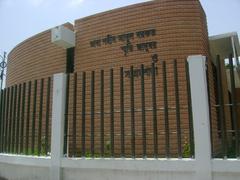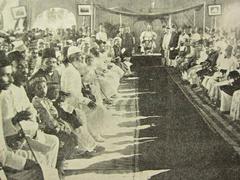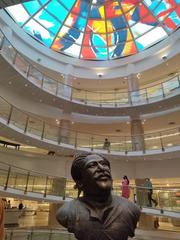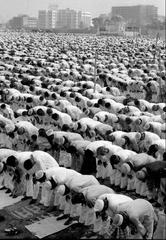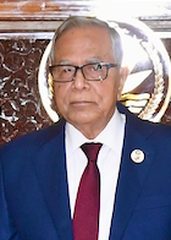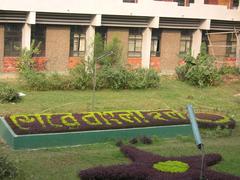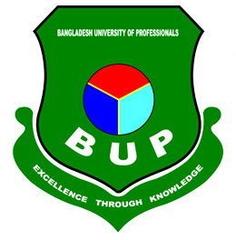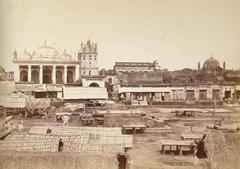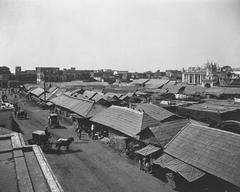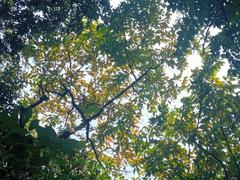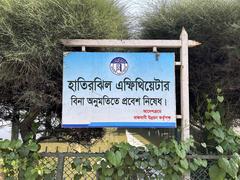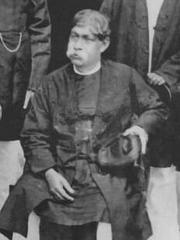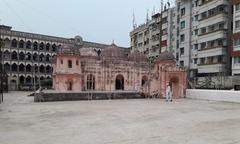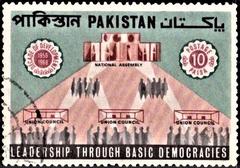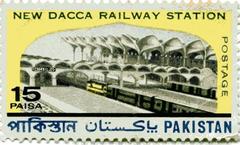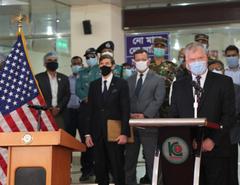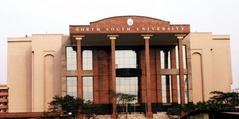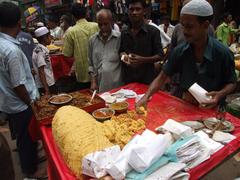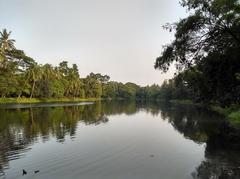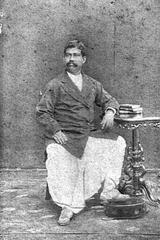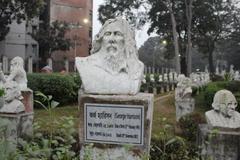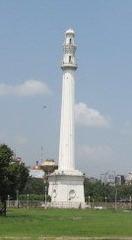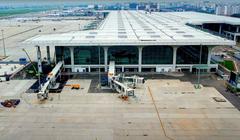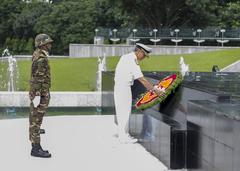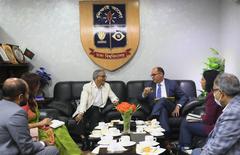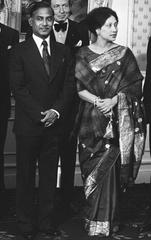
Liberation War Museum Dhaka: Visiting Hours, Tickets, and Historical Significance
Date: 04/07/2025
Introduction: The Importance of the Liberation War Museum in Dhaka
The Liberation War Museum in Dhaka stands as a powerful testament to Bangladesh’s struggle for independence during the 1971 Liberation War. Established in 1996 through a citizen-led initiative, the museum was created to honor the sacrifices and resilience of the Bangladeshi people. Today, it houses one of the world’s most comprehensive archives dedicated to the Liberation War, with over 21,000 artifacts, including personal belongings of freedom fighters, historical documents, weapons, photographs, and human remains from mass graves. Through immersive exhibits and educational programs, the museum is both a memorial and a dynamic learning center that connects visitors with Bangladesh’s national story (History Tools; Wikipedia).
Located in the heart of Dhaka, the museum’s striking architecture, designed to resemble a concrete warship with bullet-ravaged walls and symbolic motifs, reflects the resilience and hope that defined the nation’s struggle for freedom. Visitors journey through four chronological galleries, exploring Bangladesh’s historical path from ancient Bengal to the Liberation War and its aftermath (TBS News; Liberation War Museum Official).
The museum’s commitment to accessibility, inclusive learning, and community engagement ensures that visitors—students, researchers, or international travelers—can participate in understanding and reflecting upon the themes of freedom, justice, and human rights that underpin Bangladesh’s history (audiala.com; TravelSetu).
Table of Contents
- Introduction: The Importance of the Liberation War Museum in Dhaka
- Origins and Vision
- Early Years and Growth
- Collection Expansion and Relocation
- Architectural Features
- Collections and Exhibitions
- Visiting Hours and Tickets
- Accessibility and Visitor Amenities
- Nearby Attractions and Travel Tips
- Educational Role and Community Engagement
- Digitalization and Global Reach
- Visitor Information
- Frequently Asked Questions (FAQ)
- Visuals and Interactive Media
- Conclusion and Call to Action
- References and Further Reading
Origins and Vision
The Liberation War Museum was conceived and established in 1996 by a group of eight trustees—distinguished citizens, historians, and activists—driven by a shared vision to preserve the memory and lessons of the 1971 Liberation War (History Tools; Wikipedia). The founders invited public participation, collecting artifacts, personal stories, and documents from across Bangladesh. This grassroots approach ensured that the museum reflected the collective memory and experiences of the nation.
Early Years and Growth
The museum began in a modest colonial-era building, opening its doors in March 1996 (Bangladesh.com). Its galleries documented the cultural heritage of Bengal, the impact of colonial and Pakistani rule, the genocide of 1971, and the ensuing resistance. From the beginning, the museum’s mission was to serve as both a memorial and an educational institution, promoting democracy, pluralism, and human rights (History Tools).
Collection Expansion and Relocation
By 2016, the museum’s collection had grown to over 21,000 items, making it the world’s largest archive of Liberation War material culture (History Tools; Wikipedia). With expanding collections and increased visitor demand, a new state-of-the-art complex was inaugurated in Agargaon, Dhaka, in 2017. The new museum offers over 3,500 square meters of display space, interactive exhibits, a library, and research facilities (The Daily Star; TravelSetu).
Architectural Features
Design Philosophy and Symbolism
The museum’s award-winning design by Tanzim Hasan Selim and Naheed Farzana of Design Work Group (DWG) embodies themes of resilience, sacrifice, and hope. Key architectural features include:
- Bullet-ravaged walls representing the scars of war (Scribd Case Study).
- Defiant columns symbolizing the unity of the Bangladeshi people.
- Motif-adorned ramp guiding visitors through key periods of Bangladesh’s history (TBS News).
- Use of concrete, glass, and steel to convey strength and transparency, with traditional motifs reflecting local craftsmanship (Humbo).
Spatial Organization and Accessibility
The museum covers around 20,000 square meters, with galleries arranged chronologically. Visitor flow is intuitive, and ramps ensure full accessibility (Liberation War Museum Official). Natural light and open spaces create a reflective atmosphere.
Collections and Exhibitions
Scope and Size
With over 21,000 artifacts, the museum tells the story of Bangladesh’s path to independence. The four main galleries explore:
- Ancient Bengal and Colonial Era: Regional history and India’s independence movement.
- Partition and Language Movement: The creation of Pakistan and the language movement of 1952.
- Political Uprisings and Prelude to War: Growing discontent and the lead-up to 1971.
- Liberation War and Aftermath: Artifacts from the war, personal effects of martyrs, and powerful reminders of genocide (Liberation War Museum Official).
Notable Artifacts and Interactive Installations
- Personal belongings: Diaries, clothing, and weapons of freedom fighters (Breathe Bangladesh).
- Photographic archives: Documenting leaders, civilians, and key events.
- Media coverage: Local and international reports.
- Human remains: Preserved from mass graves, underscoring the war’s human cost.
- Audio-visual presentations: Survivor testimonies and documentaries (Secrets Bangladesh).
- Digital archives: Interactive touchscreens for deeper exploration.
Memorial Spaces
Dedicated quiet areas and memorials provide space for reflection and remembrance of those who sacrificed their lives for independence (Secrets Bangladesh).
Visiting Hours and Tickets
- Opening Hours: Saturday to Thursday, 10:00 AM to 5:00 PM. Closed Fridays and public holidays. Check the official website for holiday schedules.
- Ticket Prices: Affordable entry, with discounts for students and children. Foreign visitors may have a higher fee. Tickets are available at the entrance or online.
- Guided Tours: Available on request; group bookings can be arranged in advance.
- Photography: Permitted in designated areas. Flash and videography may require permission.
Accessibility and Visitor Amenities
- Accessibility: Ramps and facilities for visitors with disabilities. Clear signage in Bengali and English.
- Amenities: Restrooms, café, souvenir shop, and rest areas are available.
- Safety: The museum maintains a secure environment with staff and security personnel.
Nearby Attractions and Travel Tips
- Location: Agargaon, Dhaka—easily accessible by public transport or rideshare (Breathe Bangladesh).
- Parking: Limited onsite parking; public transport is recommended.
- Nearby Sites: National Museum, Ramna Park, Dhaka University, and other historical attractions.
- Visitor Tips: Wear comfortable shoes, carry water, and plan for 1–2 hours to fully experience the exhibits. Respectful conduct is expected.
Educational Role and Community Engagement
The museum not only preserves history but also fosters critical reflection on justice, freedom, and human rights. Educational programs, seminars, and special exhibitions—especially during Liberation War anniversaries—target students and researchers (TravelSetu). The museum also supports justice initiatives such as the International Crimes Tribunal (History Tools).
Digitalization and Global Reach
The museum’s website offers virtual tours and access to online archives, allowing worldwide engagement. Social media channels and mobile apps provide up-to-date information and guided tours (TravelSetu; audiala.com).
Visitor Information
- Address: Sher-e-Bangla Nagar, Agargaon, Dhaka.
- Accessibility: Ramps, elevators, and multilingual signage.
- Language: Exhibits in Bengali and English; staff can assist in English.
- Facilities: Restrooms, café, gift shop, information desk, and guided tours.
Frequently Asked Questions (FAQ)
Q: What are the visiting hours?
A: Saturday to Thursday, 10:00 AM to 5:00 PM. Closed Fridays and public holidays.
Q: How much are tickets?
A: Tickets are affordable, with student and group discounts. Check the official website for details.
Q: Is the museum accessible for visitors with disabilities?
A: Yes, the museum is fully accessible.
Q: Are guided tours available?
A: Yes, guided tours and audio guides are available.
Q: Is photography allowed?
A: Yes, in designated areas; flash and videography may require permission.
Q: What other sites are nearby?
A: The National Museum, Ramna Park, Dhaka University, and other historical landmarks.
Visuals and Interactive Media
Explore images of the museum’s architecture and exhibits via the official website. Virtual tours, interactive maps, and high-resolution photos (with SEO-optimized alt text) are available for both onsite and remote learning (GPSmyCity).
Conclusion and Call to Action
Visiting the Liberation War Museum Dhaka offers a profound and educational experience that honors Bangladesh’s journey to independence. The museum’s rich collections, thoughtful architecture, and dynamic educational programs make it an essential destination for anyone interested in history, culture, and human rights.
Plan your visit:
- Check opening hours and buy tickets in advance.
- Download the Audiala app for self-guided audio tours and updates.
- Follow the museum’s social media for news on exhibitions and events.
- Explore related articles to discover more about Dhaka’s historical sites.
References and Further Reading
- Remembrance and Reckoning: The Liberation War Museum of Bangladesh (History Tools)
- Liberation War Museum (Wikipedia)
- Liberation War Museum Dhaka: Visiting Hours, Tickets, History & Visitor Guide (TravelSetu)
- Liberation War Museum Architectural Edifice (TBS News)
- Liberation War Museum Official Website (Liberation War Museum Official)
- Liberation War Museum Dhaka Visitor Guide (makemytrip.com)
- Liberation War Museum Dhaka (touristplaces.com.bd)
- Museum of Independence (audiala.com)





